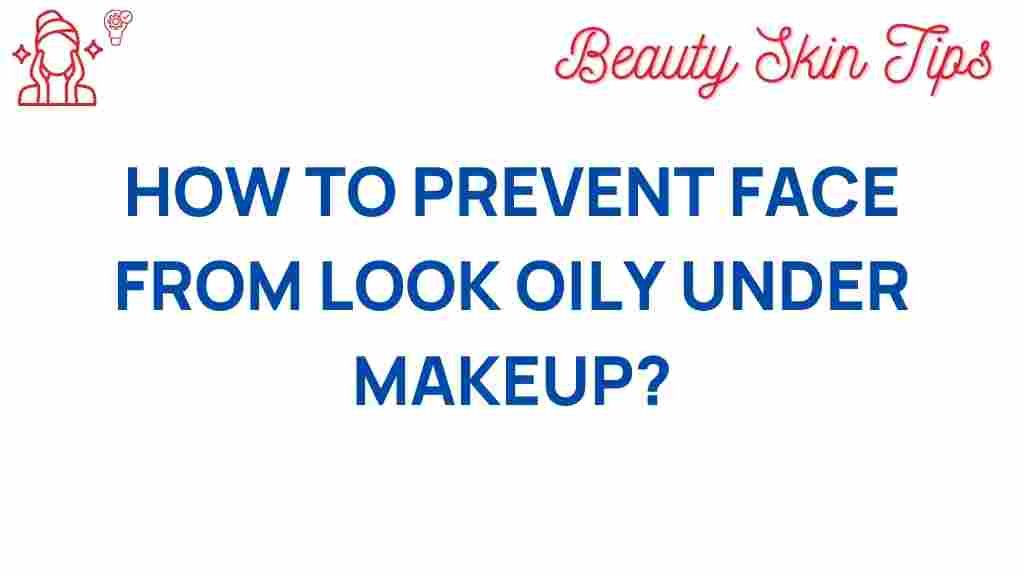Oily Skin: Mastering the Art of Control
Dealing with oily skin can be a challenge, especially when it comes to makeup application. Oily skin often leads to a shiny complexion, clogged pores, and makeup that just won’t stay put. However, with the right techniques and products, you can master the art of oily skin control and achieve a flawless look. In this comprehensive guide, we will reveal makeup secrets specifically designed for those with oily skin.
Understanding Oily Skin
Before diving into makeup techniques, it’s essential to understand what causes oily skin. Oily skin occurs when sebaceous glands produce excess sebum. This can be influenced by several factors:
- Genetics: A family history of oily skin can increase your chances.
- Hormones: Fluctuations during puberty, menstruation, and pregnancy can elevate oil production.
- Climate: Hot and humid weather can exacerbate oily skin.
- Diet: A diet high in sugar and processed foods may contribute to oiliness.
Understanding your skin will help you choose the right products and techniques for effective control.
Step-by-Step Process for Oily Skin Control
Here’s a step-by-step guide to mastering makeup application on oily skin:
Step 1: Start with a Clean Slate
Cleaning your face properly is crucial for oily skin. Use a gentle, oil-free cleanser that helps remove excess sebum without stripping your skin of its natural moisture. Look for products labeled as:
- Oil-free
- Non-comedogenic
- Salicylic acid or glycolic acid-based
Step 2: Toner for Oily Skin
Applying a toner can help to balance the skin’s pH and remove any leftover impurities. Choose a toner that includes:
- Witch hazel
- Tea tree oil
- Rosewater
These ingredients can help minimize oil production while keeping your skin hydrated.
Step 3: Moisturize Wisely
Even oily skin needs moisture. Opt for a lightweight, oil-free moisturizer. Look for terms like:
- Gel-based
- Water-based
- Mattifying
A good moisturizer can provide hydration without adding to the oiliness.
Step 4: Prime for Perfection
Using a primer is vital for oily skin. A mattifying primer can help control shine and create a smooth canvas for makeup application. Apply a small amount to your T-zone or areas that tend to get oily. Look for primers containing:
- Silicone
- Matting powders
- Oil-absorbing ingredients
Step 5: Foundation Selection
Choosing the right foundation is crucial for oily skin. Consider the following:
- Type: Opt for oil-free and matte-finish foundations.
- Form: Liquid or powder foundations can work, but powders often provide a more matte finish.
- Coverage: Buildable coverage is ideal to avoid a thick layer that can lead to breakouts.
Always test the foundation on your jawline to ensure it matches your skin tone.
Step 6: Setting Your Makeup
To keep your makeup in place, use a setting powder. Apply it to the areas where you tend to get oily, like the T-zone. Look for:
- Translucent powders
- Oil-absorbing powders
For added staying power, finish with a setting spray designed for oily skin.
Troubleshooting Common Oily Skin Makeup Issues
Even with the best techniques, you may still face some challenges. Here are troubleshooting tips for common issues:
Shiny Face Midday
If your face appears shiny by midday, consider using:
- Blotting papers to absorb excess oil without disturbing your makeup.
- Matte finishing powder to touch up your makeup throughout the day.
Makeup Melting Off
If your makeup melts off, ensure you’re using the right primer and setting products. Additionally, avoid heavy, creamy products that can contribute to oiliness.
Breakouts from Makeup
Oily skin is more prone to breakouts. To prevent this:
- Always use non-comedogenic products.
- Remove makeup thoroughly at the end of the day.
- Consider using a gentle exfoliator once or twice a week to remove dead skin cells.
Conclusion
Mastering the art of oily skin control requires understanding your skin type and using the right products and techniques. By following this step-by-step guide, you can achieve a flawless look that lasts all day. Remember, the key to success lies in the products you choose and how you apply them. Don’t forget to embrace your natural beauty and experiment with different looks!
For more tips on skincare and makeup, visit our blog. For further reading on oily skin and skincare routines, check out this guide.
This article is in the category Skincare and created by BeautySkinTips Team
